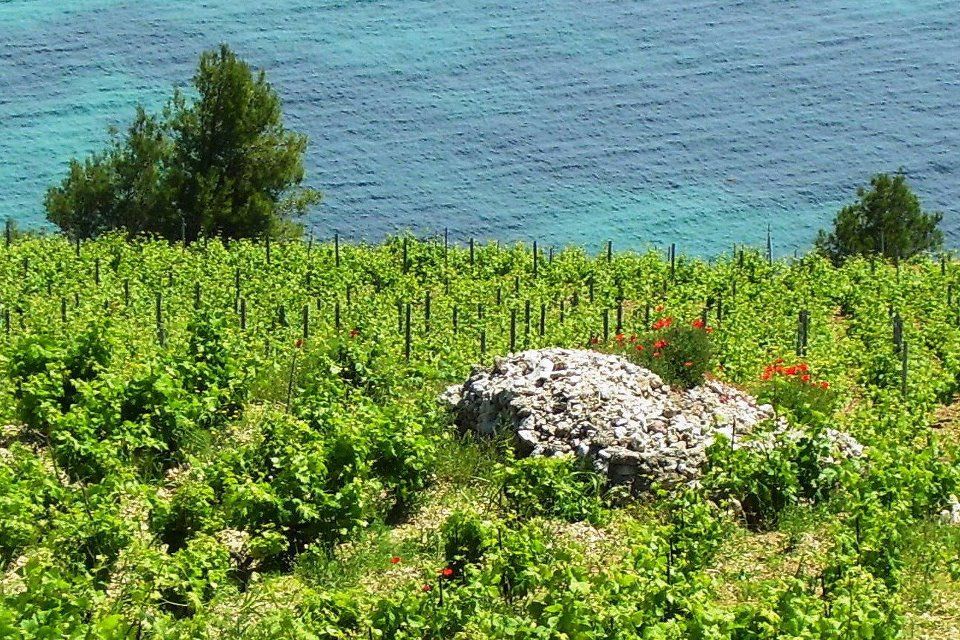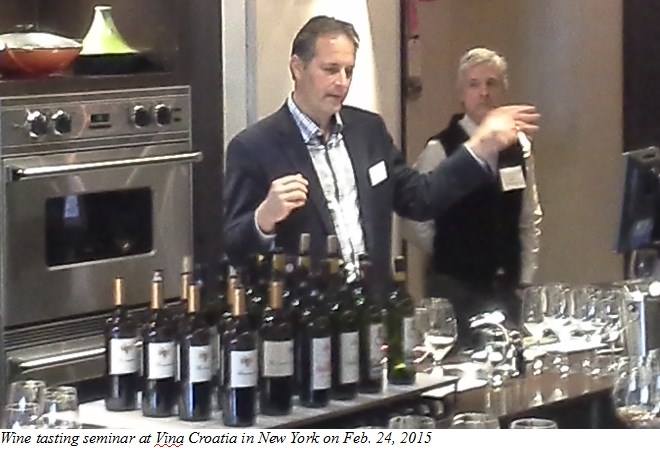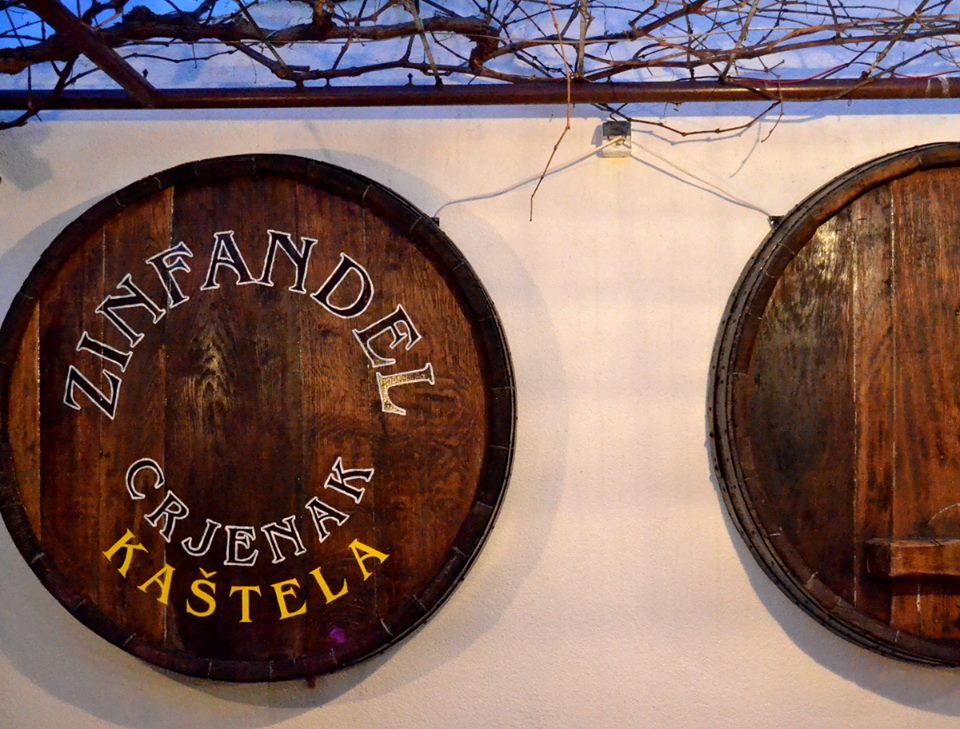A fascinating account of the history, progress and challenges of Croatian wine importing into the competitive American market. By a man who knows.
I am delighted that Croatian wine pioneer Cliff Rames, agreed to makes some contributions to the Total Croatia News team. Cliff, whose outstanding Wines of Croatia blog has both been a premier source of information for people interested in Croatian wine, as well as a window to the world for many young and lesser-known winemakers, has a unique insight into Croatian wine in America, from his standpoint in New York City.
This article is destined for a permanent home on Total Croatia News, but as we are still a few days from launching, I thought it would be nice to share here.
Thanks Cliff, your support is appreciated. If you would like to contribute to Total Croatia News, we would love to hear from you on [email protected] or why not join us on Facebook?
Over to young Cliff…
It’s nearly a decade ago. A shipping container quietly slips into the port of New York. Inside its cold, dark belly, a precious cargo waits to be released. Several tense days follow as US Customs officials scrutinize paperwork and examine the contents: just one mistake, or one mislabeled item, and the whole lot could be confiscated and destroyed.
The “all clear” is given at last. A truck rolls up to the dock and several plastic-wrapped pallets are stowed and motored away to a warehouse in the suburbs of Long Island. Behind the wheel, Daniel Pedisich sweats and worries, attentively avoiding every pot hole and maneuvering each curve in the road with precision to ensure the safety of his fragile freight. Questions race through his mind. Will people like them? Can I sell them? Is there a future in this? But in his gut he knows the answer, and he presses on with inspired resolve.

That was 2006. And if Pedisich could have his way, America would soon fall in love with Croatian vino—or, as a starting point—the wines of Bibich, a boutique family winery from Skradin, not far from Croatia’s gorgeous Adriatic coast. Pedisich had met Bibich owner and winemaker, Alen Bibic, while on vacation and became convinced that Croatian wines warranted a place on the US market. Armed with a truck load of bottles bearing labels with funny names like Debit, Plavina, Babic, and Lasina, he was determined to introduce them to thirsty Americans.
“My inspiration was the Zinfandel story,” he recalls. “I knew Croatia had the potential to produce world class wines. I hoped that the story of Zinfandel’s origins in Croatia would add a level of familiarity and make a connection with consumers.”
I remember meeting Pedisich at an in-store tasting in Manhattan, where he poured tastes of Bibich for unsuspecting wine shop wanderers.

Although I was unfamiliar with Bibich wines at the time, I instantly recognized the aromas and flavors swirling in my glass; they transported me to the the Adriatic seaside with its jagged white stones and red earth; fig and olive trees; and delightful days gathered around tables of friends and relatives, celebrating the rituals of eating and drinking—and the simplicity of being. Surely, Americans would see the beauty in these wines, we declared.
“The biggest challenge back then, and remains so today, is recognition,” reflects Pedisich. “Many people still do not realize that Croatia is an ancient wine region with many interesting native varieties. Yet I believe we helped to build a strong foundation for the future. It’s still a niche market but one that possesses a lot of potential to expand.”
Since the early days of Bibich, the portfolio of Croatian wineries exporting to the US has blossomed to more than two dozen. Native varieties such as Babic, Bogdanuša, Crljenak Kaštelanski (Zinfandel), Debit, Graševina, Malvazija Istarska, Plavac Mali, Plavina, Pošip, Teran, Žlahtina, and even Škrlet and Sansigot can now be spotted on the wine lists of restaurants and shelves of wine shops in Boston, Chicago, Los Angeles, Miami, New York City, Portland (Maine), San Francisco, and Washington DC.
Wineries that presently have representation in America reads like a Who’s Who list of Croatia’s finest wine producing families and cooperatives: Androvic, Badel 1862, Belje, Bibich, Bura, Čara, Caric, Cattunar, Clai, Coronica, Dingac Vinarija, Dubrovacki Podrumi, Enjingi, Grgic, Istravino, Katunar, Korta Katarina, Kosovec, Kozlovic, Kriz, Matoševic, Miloš, Piquentum, Piližota, Plancic, Putnikovići, Skaramuca, Šipun, Toreta, Trapan, and Zlatan Otok.
For all the successes, challenges remain. Ten years of market presence has dimmed the luster of novelty among wine buyers and sommeliers who crave the excitement of new discoveries. Indeed, other regional competitors are already lining up with well-funded marketing campaigns. Bulgaria, Georgia, Moldova, and Turkey have all held high-profile tastings in the US recently and are garnering international awards, generating a buzz among buyers who perpetually seek—and expect—that sweet intersection of distinction, authenticity and value.

With so many options on an already flooded market, the key to getting noticed is “quality in the glass at an affordable price,” says Ilya Shchukin of Vinum USA, a New Jersey-based importer. “I get excited when I meet small producers who are willing to offer wine at a lower cost without compromising quality. It’s an investment that allows us to open the door and offer their wines to adventurous retailers and consumers who appreciate honest, hand-crafted wines from new regions and varieties. The Piližota Plavina is a fine example. We are now offering the third vintage and sales keep growing.”
According to Frank Dietrich, owner of San Francisco-based Blue Danube Wine Company (and current importer of Bibich wines, among many others), the popularity of artisanal wine bars and a new generation of curious and enthusiastic sommeliers has benefited Croatian wine sales. “Sommeliers are excited to feature Croatian wines. It’s a testament to their engagement as professionals and shows their curiosity to explore the ever-expanding world of wine. They love it when they can help a customer discover something new and delicious; seeing the surprise is so rewarding. Buyers also appreciate that Croatian wines taste authentic and tell an interesting story of their terroir.”
Marko Babsek, a brand manager for Winebow, says the trick to making Croatian wines accessible is to feature them on By The Glass lists. “For an affordable price customers can taste them one glass at a time, get familiar with them, and learn the story of the producer and grape varieties. Familiarity reinforces comfort, and comfort instills confidence. A consumer who is happy is more likely to try something else at a higher price point.”
However, curious consumers who live far from urban centers find access to Croatian wines impeded by the constraints of distribution. Under US alcohol law, a distributor must apply for licenses for every state in which it intends to distribute, and then register each wine label it will distribute in those states—an administrative nightmare. Currently only Winebow (who imports Trapan) has national distribution reach, although others (Blue Danube Wine Company; Vinum USA) have collectively expanded their distribution network to nearly 20 states.
“Distribution is a major challenge,” observes Fred Dexheimer, Master Sommelier and operator of RX Wine Lab (a wine bar and education center) in

Durham, NC. “Once you travel beyond the large metropolitan areas like New York and San Francisco, it becomes harder and harder to find Croatian wines. People are generally excited by these wines. They have heard the buzz and want to try them. It’s frustrating when they cannot find them at the local shop or restaurant. With expanded distribution the wines will get into the hands of more tastemakers and trendsetters in smaller cities and areas where Croatian wines will be new and exciting.”
And which Croatian wines are selling best in America?
“The trend is definitely towards leaner style reds; crisp, unoaked, and mineral-driven whites; and fresh rosé,” reports Babsek. “These wines are super approachable and food-friendly. Lighter reds with less manipulation, more fruit, higher acidity and less alcohol are the way of the future for Croatian reds.”
Dietrich stresses that “the most successful wines are made from Croatia’s unique, native grape varieties: Plavac Mali, Pošip, Teran, Malvasia, and of course, Graševina.”
Yet success hasn’t come easy. Responsibility for promotional activities and marketing has fallen mainly upon importers and individual producers, with the assistance of Wines of Croatia—an independent, non-governmental project that utilizes social media platforms to raise awareness and share information. While three grand tasting events—sponsored by Vina Croatia and the Croatian Chamber of Economy—were held in New York over the last five years (in 2011, 2013, and 2015), no additional resources have been invested by the Croatian government in US marketing initiatives.
Most professionals interviewed for this report agree, a sustained marketing campaign that includes frequent tastings and investment in promotional materials is essential to remain competitive, reach more buyers and consumers, and increase sales.
“It takes a lot of work to sell Croatian wines,” observes Dietrich. “We must always explain that Croatia has been producing wines for more than 2,000 years. We must overcome prejudice; some people still dismiss Eastern European wines as low quality. But we overcome it by sampling, explaining, telling the stories, and conducting return visits and follow-up.”
“It’s going to take many years, bottle by bottle, glass by glass,” echoes Pedisich. “But that should not stop anyone. There is still a lot of enthusiasm. Bibich and Trapan have a great model. These are two young winemakers who are patiently investing the time, money and effort in the US market. They visit frequently and personally visit buyers.”
Shchukin concurs: “The US market is the most competitive market in the world. The three-tier system will render your wines more expensive than you planned. Any producer who wants to succeed in the US should first come for a visit, talk to importers and retailers, see what’s selling, buy a bunch of bottles, taste, compare and calculate.”









